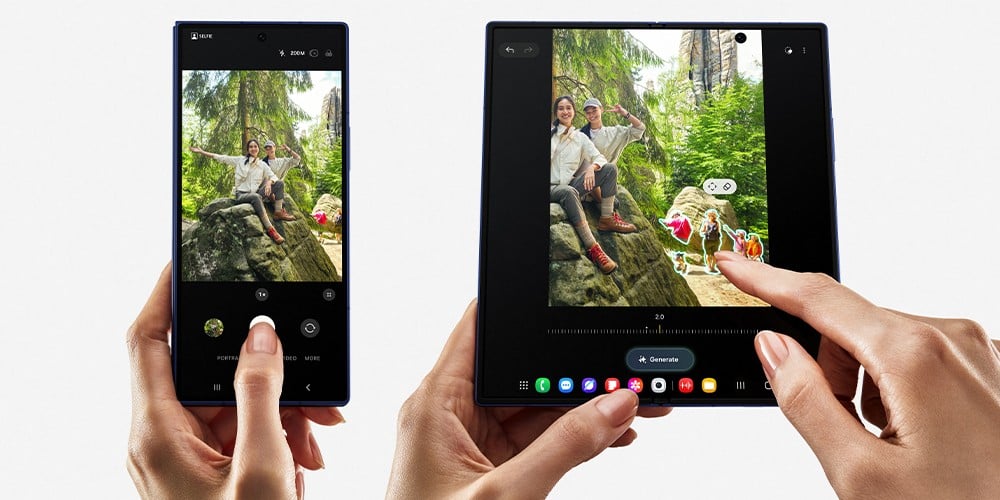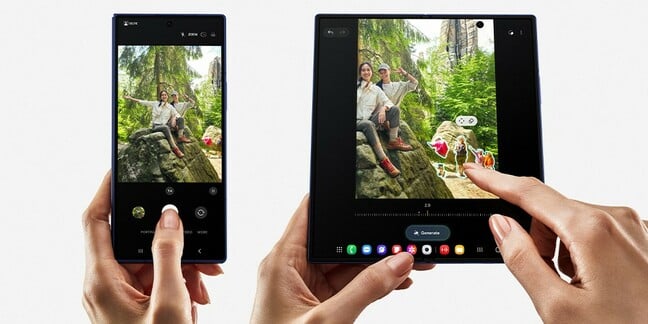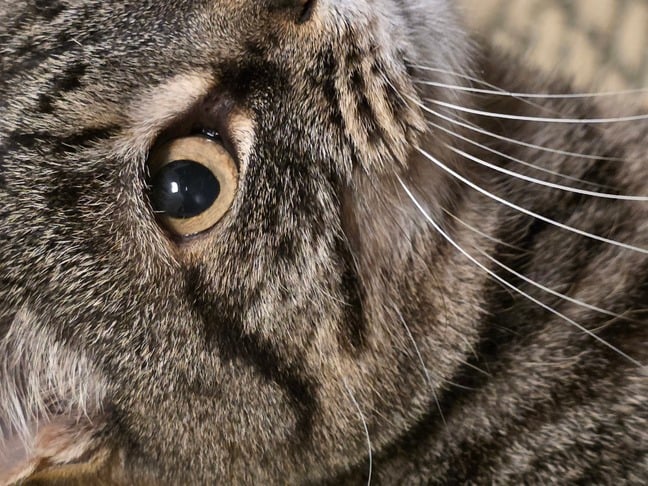hands on Folding smartphones have been with us for six years without winning much market share, but after two weeks using Samsung’s latest model, and recent reports of surging sales in the category, it feels to me like dual-screened devices are something developers now need to consider.
For those who came in late, Samsung set one standard for foldables with 2019’s Galaxy Fold, a device that looks like a conventional smartphone but which opens like a book to reveal the double-width display inside. The device was hefty – 15.5 mm thick and 276 grams – and chewed through battery life when driving its 7.3-inch internal screen.
In the same year, Motorola rebooted its Razr range with a phone that started life as a little square-ish block with a small display on one external surface, and which opened up into a conventional rounded rectangular Android. Samsung followed that template with the Galaxy Flip.
All were expensive and their folding screens were a little disconcerting to use and sometimes showed signs of age after a few months. Subsequent models improved slightly, but the phones were still thick, heavy, and pricey. Sales stalled at about 1.5 percent market share, even after more manufacturers started making foldables.
That’s changed in recent months. Analyst firm Counterpoint recently reported 45 percent year-over-year shipment growth, led by Huawei and helped by Motorola’s Razr 60 lowering the cost of entry-level foldables to a near-midrange $699.
Counterpoint also reported record sell-through for Samsung’s 2025 edition Galaxy Z Fold7 and Flip7.
I’ve just spent two weeks with the Fold7, which Samsung has slimmed down significantly.
This year’s model is just 8.9 mm thick when folded and weighs 215 grams. That’s just 0.7 mm thicker than Samsung’s single-screen flagship, the Galaxy S25 Ultra, and three grams lighter. My current personal phone is a 2023 Galaxy S23 Ultra, which is the same width as the Fold7 and 18 grams heavier than the new machine.
Samsung Galaxy Z Fold7 smartphone
The Fold7’s internal 8-inch screen is sufficiently bright and colorful that its relatively low 2184 x 1968 (QXGA+) resolution isn’t an issue. The machine’s camera shoots in the same shape as the big screen, and I found point-and-click shots taken without a moment’s thought for optimizing settings produced fine results. Here’s our family cat, Bellatrix. Click to enlarge the image and you’ll find the phone picked out individual hairs rather nicely.
The author’s cat shot with the Galaxy Fold7
What Samsung calls the phone’s “secondary” display – the one at the front in the conventional smartphone configuration – is also lovely but feels narrow and cramped once you start to use the larger screen.
I found my enjoyment of games increased on the big screen, which is pleasingly larger than some e-readers and smaller than the tablet computer I use to read e-books. I marveled at the improved typing accuracy the wider keyboard affords, as it allowed me to enter characters with two thumbs rather than poking with a single finger as I do on smaller smartphones. Websites look great. The fold in the screen is barely perceptible and never gets in the way.
The presence of the bigger screen is a boon that made me feel the phone can adapt to my circumstances. If I’m listening back to an interview for a story, using the large screen means the progress bar is larger and easier to navigate – it’s a little easier to find that quote that readers will appreciate. When reading a long email, the option to see more of it on screen without scrolling helped me to concentrate. The chance to see images on a larger screen is just nice and meant fewer scrambles to find my reading glasses.
There are also some wrinkles. The Fold7 was bad at facial recognition, meaning that wasn’t a login option. Its biometric fingerprint sensor is badly placed on its left edge and I often thought I would drop the phone while trying to access it. The speaker is tinny and the USB-C port is oddly hard to find and use. The raised camera area means the phone never lies flat, a problem for many smartphones but one exacerbated by the Fold7’s larger size when unfolded. Using it on flat surfaces therefore involves some wobbling and worrying little impacts.
Some apps waste the big screen. Amazon Prime Video centers its output in the middle of the large display. Netflix doesn’t, wastefully forcing vids into the bottom half of the big screen.
Other apps can’t switch between the large and small displays without restarting, an annoyance that interrupts an otherwise smooth and swift Android experience.
Which is why I think developers need to start paying attention to folding phones, because despite its annoying aspects the Fold7 is a brilliant smartphone and the only one I’ve tried in years that doesn’t feel like just a new rounded rectangle that’s a bit faster and has better battery life than my old machine.
That pleasant experience comes at a high price. For the $1,999 starting price, you could buy its Galaxy S24 ($699) smartphone, Galaxy Tab S10 FE ($430) tablet computer, and Galaxy Book 5 laptop ($799) and have cash to spare.
Samsung therefore needs developers to code for this device’s possibilities, so they create more experiences that drive demand for the hardware. However, the surging sales for all foldables spotted by Counterpoint, and the inevitability that foldable prices will fall, suggest it’s worth making that effort. ®



